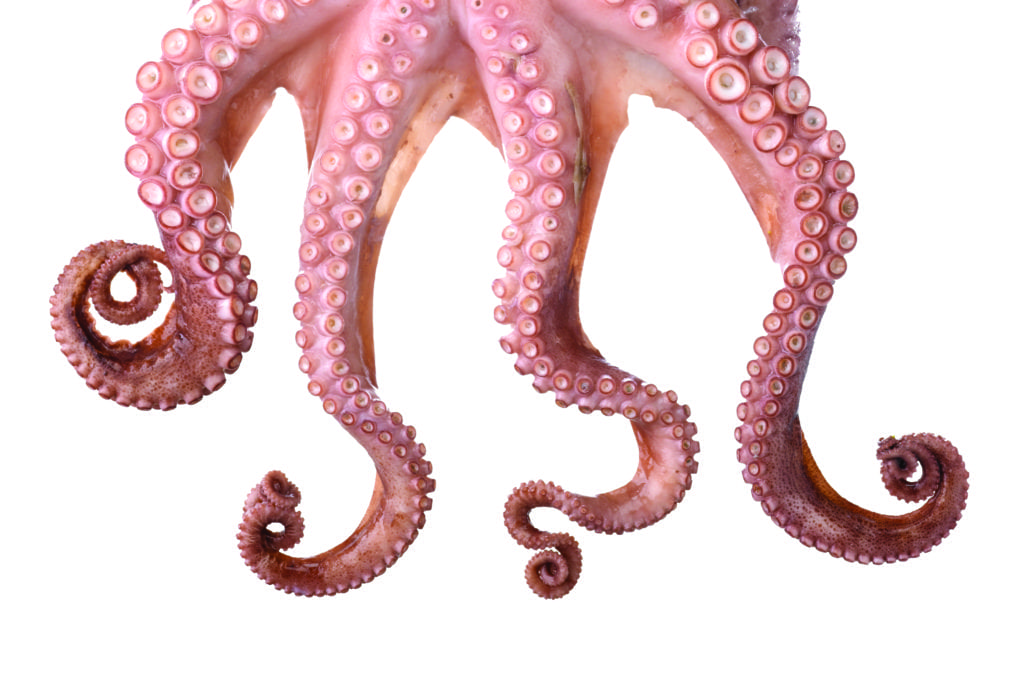Octopus (June 14)


How does an octopus change the color of its skin to match his surroundings in the blink of an eye? Below the top layer of protective skin, an octopus has three more layers (chromatophore layers) with thousands of tiny, balloon-like sacs filled with different pigment colors. The top layer of chromatophores has black and brown colored sacs, the middle layer has red and orange colored sacs, and the third layer has yellow colored sacs. Nerves and muscles cause the balloon-like sacs to expand and contract. When the sac expands, the color in that layer becomes more visible, and when contracted, the color becomes less visible. But the octopus camouflage system is even more complex. The fifth layer down is filled with iridophores, which are reflecting plates that give the octopus iridescent golds, silvers, blues and greens. The sixth or bottom layer contains leucophores, which mirror back colors from any surrounding environments.
Octopus skin has inspired researchers to develop a high-tech camouflage fabric. So far, the fabric can automatically shift between white and black as well as making shades of gray. One of the engineers noted that, “…looking at moves of squid, octopuses, and cuttlefish, you just (realize) that you’re not going to get close to that level of sophistication.” This engineer knows the difficulty of making such a fabric. When man tries to copy what has already been made but cannot even come close, we must stand in awe of the original design Engineer, God, Himself!
1 Chronicles 16:31-32
Reference
Researchers Draw Inspiration for Camouflage System From Marine Life
Yu, C. et al. “Adaptive optoelectronic camouflage systems with designs inspired by cephalopod skins”. Proceedings of the National Academy of Sciences.
